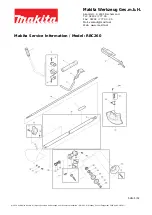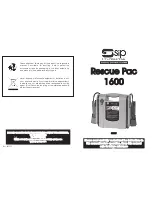
22
pilot and clearance holes should be drilled. Always hold the
machine straight on the bolt to be tightened.
The best method to determine the right impacting/tightening
duration is by means of a trial. For small screws, the right
impacting/tightening duration can be reached in less then
0.5 Sec. Therefore, work with low RPM and switch the
machine off immediately when the screw is tight and the
impacting sound can be heard.
For screwing larger, longer wood screws into hard material,
pre-drilling is the best method.
Tightening torque
The tightening torque depends on the duration of the
impacting/tightening action. The largest tightening torque
is achieved after approx. 6 to 10 Sec. impacting/tightening
action. Over tightening or the use of poor quality fasteners
can result in the fastener shearing.
The torque build-up depends on the following factors:
•
Hardness of the bolts/nuts.
•
Type of washer (disk washer, spring washer, seal).
•
Hardness of the material to be joined.
•
Lubricating effect at the surfaces of the junction.
This leads to the following application cases:
Hard case:
The joining of metal to metal with a disk
washer. The maximum torque is reached
after a relative short impacting/tightening
action.
Medium case:
The joining of metal to metal where spring
ring washer, disk spring washer, stud bolts
or bolts/nuts with conical seats are used.
Soft case:
The joining of e.g. metal to wood or
insulation material.
For middle or soft joining cases, the maximum tightening
torque is less as for hard cases. Therefore, a longer
impacting/tightening action is necessary to arrive at the
maximum tightening torque.
Fastening with screws
This procedure will enable you to fasten materials together
with your tool without stripping, splitting or separating the
material.
1. Clamp the pieces together and drill the first hole 2/3 the
diameter of the screw. If the material is soft, drill only 2/3
the proper length. If it is hard, drill the entire length.
2. Unclamp the pieces and drill the second hole the same
diameter as the screw shank in the first or top piece of
wood.
3. If flat head screw is used, countersink the hole to make
the screw flush with the surface. Then, simply apply
even pressure when driving the screw. The screw shank
clearance hole in the first piece allows the screw head to
pull the pieces tightly together.
Running nuts and bolts
Variable speed control must be used with caution for driving
nuts and bolts with socket set attachments. The technique
is to start slowly, increasing speed as the nut or bolt runs
down. Set the nut or bolt snugly by allowing the impacts to
tighten the fastener over a period of time. ie the longer the
impacts, the tighter the fastener.
Note.
Hold the impact driver firmly.















































